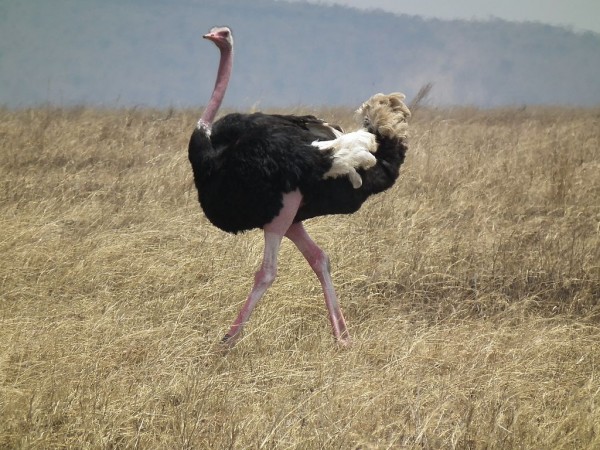Biped Running Robots Look to Running Birds for Inspiration
| Marc Maligalig | | Oct 30, 2014 10:24 AM EDT |
(Photo : Wikimedia Commons)
A study of running birds is giving researchers deeper insights on how to develop efficient two-legged running robots.
Researchers from the Oregon State University, the Royal Veterinary College and other institutions have found out how running birds achieve their ability to sprint; avoid falls or injury; maintain direction and speed and minimize energy cost.
Like Us on Facebook
"Birds appear to be the best of bipedal terrestrial runners, with a speed and agility that may trace back 230 million years to their dinosaur ancestors," said Jonathan Hurst, an associate professor and robotics expert in the OSU College of Engineering.
From huge ostriches to tiny quails, running birds come in a wide range of sizes. While only a few can fly, running birds spend most of their lives on the ground, and not always appearing the most graceful of running animals.
Researchers, however, have found out running birds have adapted to maximize the results, all the while saving energy and avoiding broken legs. An injury in the wild could lead to death.
"These animals don't care that they appear a little unstable or have a waver in their gait," Hurst said.
"Their real goal is to limit peak forces, avoid falling, be safe and be as efficient as possible. If their upper body seems to lurch around a little as a result, that's okay. What they are accomplishing is really quite elegant."
Researchers found it surprising that the wide variety of ground-running avian species with different body sizes and shapes essentially use the same tactic to accomplish their goals.
To jump over obstructions in their path, they use a movement that is 70 percent a "vaulting" movement as they approach the barrier, and 30 percent in a more-crouched posture while above the hurdle.
"Evolution has shaped running birds into all different sizes and skeletal structures," said Christian Hubicki, a doctoral student at OSU who co-authored the study. "But we found their behavior in how they run is essentially the same."
TagsBipedal robot, Robotics, Ostrich, Quail, Birds, Running birds
©2015 Chinatopix All rights reserved. Do not reproduce without permission
EDITOR'S PICKS
-

Did the Trump administration just announce plans for a trade war with ‘hostile’ China and Russia?
-

US Senate passes Taiwan travel bill slammed by China
-

As Yan Sihong’s family grieves, here are other Chinese students who went missing abroad. Some have never been found
-

Beijing blasts Western critics who ‘smear China’ with the term sharp power
-

China Envoy Seeks to Defuse Tensions With U.S. as a Trade War Brews
-

Singapore's Deputy PM Provides Bitcoin Vote of Confidence Amid China's Blanket Bans
-

China warns investors over risks in overseas virtual currency trading
-

Chinese government most trustworthy: survey
-

Kashima Antlers On Course For Back-To-Back Titles
MOST POPULAR
LATEST NEWS
Zhou Yongkang: China's Former Security Chief Sentenced to Life in Prison

China's former Chief of the Ministry of Public Security, Zhou Yongkang, has been given a life sentence after he was found guilty of abusing his office, bribery and deliberately ... Full Article
TRENDING STORY

China Pork Prices Expected to Stabilize As The Supplies Recover

Elephone P9000 Smartphone is now on Sale on Amazon India

There's a Big Chance Cliffhangers Won't Still Be Resolved When Grey's Anatomy Season 13 Returns

Supreme Court Ruled on Samsung vs Apple Dispute for Patent Infringement

Microsoft Surface Pro 5 Rumors and Release Date: What is the Latest?










